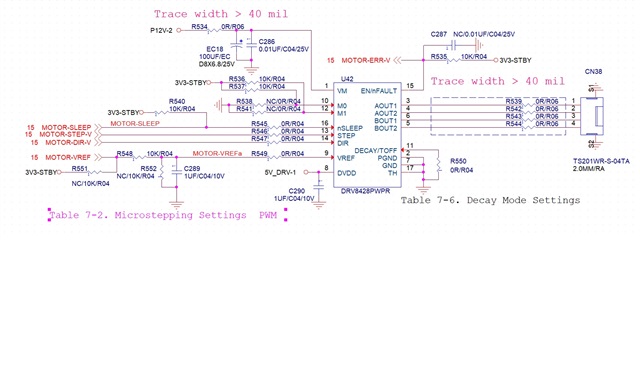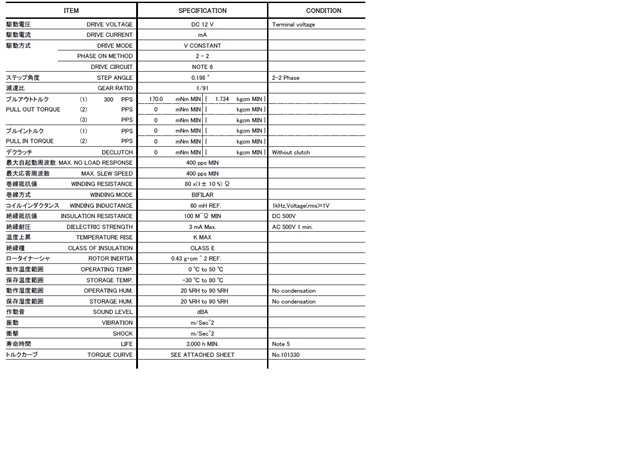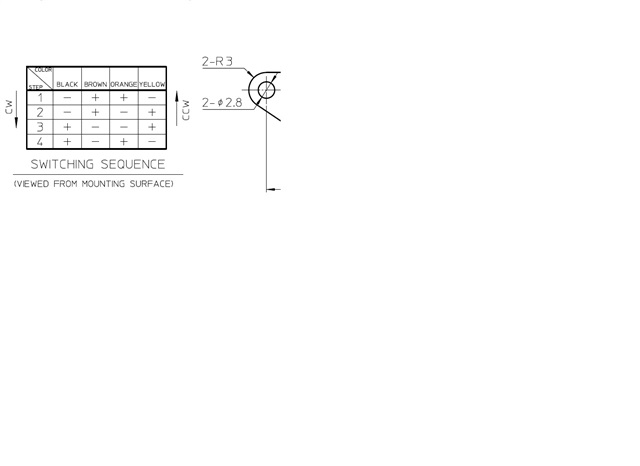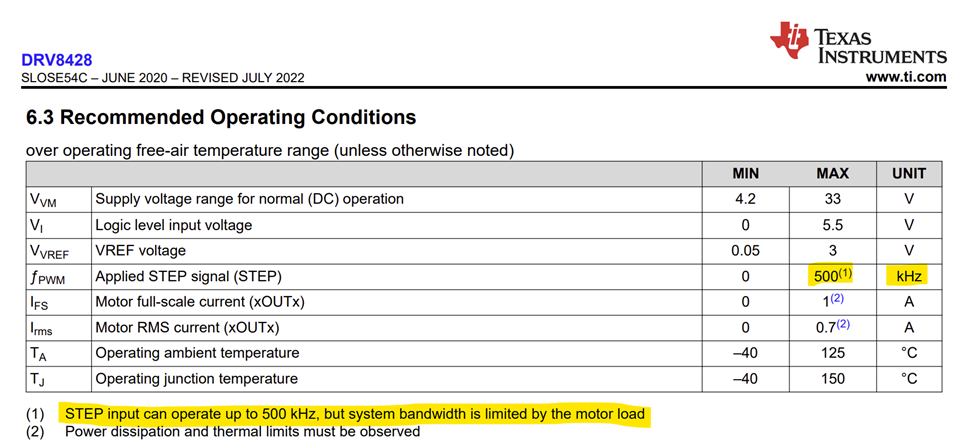Tool/software:
Hi
The customer uses DRV8428, but the stepper motor does not move. The driver output has a waveform AOUT 2 phase delay AOUT 1 180 degrees, BOUT 1 delay AOUT 2 90 degrees, BOUT 2 delay BOUT 1 180 degrees, the motor output frequency is 500 mHz VREF is currently 1.8V The hardware settings are as follows, the motor specification is attached, the software can only control STEP and VREF, please help to check the schematic to see if there is any setting error


The motor specification defines the rotation timing. How should the 8428 be defined to meet this requirement?




